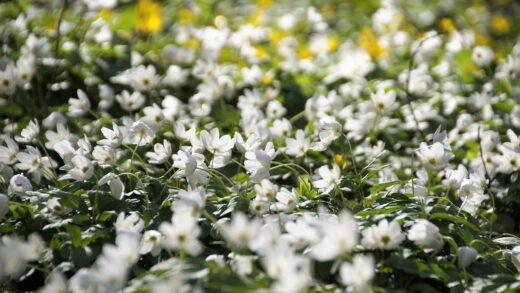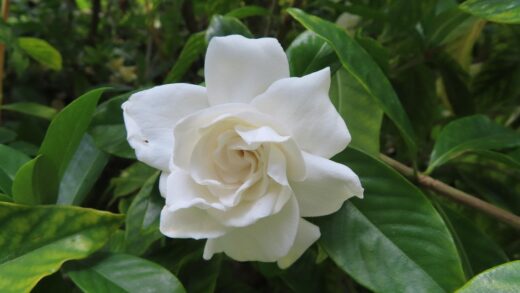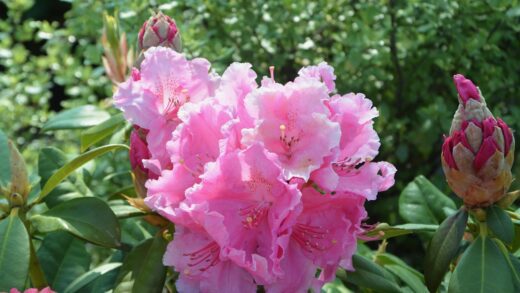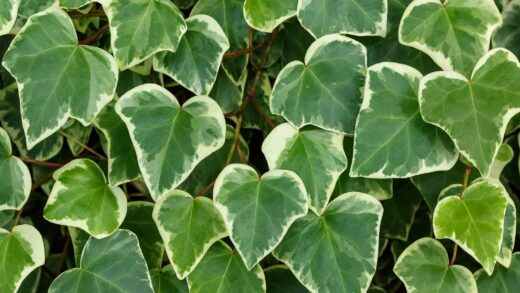Brimeura amethystina is generally a robust and resilient plant, and when provided with its preferred growing conditions of well-drained soil and adequate sunlight, it tends to be remarkably free from significant pest and disease problems. However, like any plant in the garden, it is not entirely immune, and certain issues can arise, particularly when the plant is stressed by suboptimal environmental factors. Understanding the potential threats and knowing how to prevent or address them is key to maintaining a healthy and thriving collection. The most effective strategy is always one of prevention, focusing on creating a healthy growing environment that naturally discourages the establishment of pests and pathogens.
The most significant threat to the health of amethyst hyacinths is not an insect or a specific disease, but rather the physiological problem of bulb rot. This issue is almost invariably caused by poor growing conditions, specifically soil that is too heavy and remains waterlogged for extended periods. When the bulb is forced to sit in stagnant, overly wet soil, especially during its summer dormancy, it becomes highly susceptible to attack by various soil-borne fungi and bacteria. These microorganisms cause the tissues of the bulb to break down, turning it into a soft, mushy, and often foul-smelling mass.
Prevention of bulb rot is entirely dependent on proper cultivation practices. The single most important preventative measure is to ensure the bulbs are planted in exceptionally well-drained soil. Amending heavy clay soils with copious amounts of grit and organic matter before planting is not just recommended; it is essential for the long-term survival of the bulbs. Furthermore, adhering to a correct watering schedule—keeping the soil moist in spring and allowing it to dry out in summer—is crucial. Once bulb rot has taken hold, there is unfortunately no cure, and the affected bulb must be removed and destroyed to prevent the pathogens from spreading to neighboring healthy bulbs.
Another fungal disease that can occasionally affect amethyst hyacinths, particularly during cool, damp spring weather, is grey mould, caused by the fungus Botrytis cinerea. This disease typically appears as fuzzy grey or brown patches on the leaves, stems, or flowers, especially on tissues that are damaged or fading. It thrives in conditions of high humidity and poor air circulation. To prevent grey mould, ensure there is adequate spacing between your plants to allow for good airflow, which helps the foliage to dry quickly after rain. It is also good practice to remove any fading flowers or dying leaves promptly to eliminate potential sites for the fungus to establish itself.
Common invertebrate pests
While not a primary target for most garden pests, amethyst hyacinths can sometimes be troubled by a few common invertebrates. Slugs and snails can be particularly problematic in the spring, as they are attracted to the tender new shoots and leaves as they emerge from the soil. They can graze on the foliage, leaving ragged holes and a tell-tale trail of slime. In severe cases, they can damage the emerging flower stalks, preventing the plant from blooming. Vigilant control in early spring is therefore very important.
More articles on this topic
There are several methods for controlling slugs and snails, ranging from physical barriers to biological controls. Creating a barrier of coarse grit, crushed eggshells, or diatomaceous earth around the clumps of bulbs can deter these soft-bodied pests. Manual removal, by going out on damp evenings with a torch to pick them off by hand, can be very effective in a small garden. For more widespread problems, environmentally-friendly slug pellets based on ferric phosphate can be used, or you can encourage natural predators like thrushes, frogs, and hedgehogs into your garden, as they are voracious consumers of slugs and snails.
Aphids are another common sap-sucking insect that may occasionally colonize the leaves and flower stems of amethyst hyacinths, particularly if the plants are under stress. These small insects feed on the plant’s sap, which can lead to distorted growth and a weakening of the plant if the infestation is heavy. They also excrete a sticky substance called honeydew, which can lead to the secondary problem of sooty mould growing on the leaves. Aphids are usually found in dense clusters on the newest, most tender parts of the plant.
Controlling aphids is generally straightforward. For a minor infestation, a strong jet of water from a hose can be enough to dislodge them from the plant. Alternatively, they can be wiped off by hand. For more persistent problems, an application of insecticidal soap or a horticultural oil spray can be very effective. These products work by direct contact, so thorough coverage of the infested areas is necessary. Encouraging beneficial insects like ladybirds, hoverflies, and lacewings into your garden is the best long-term strategy, as their larvae are voracious predators of aphids and will help to keep their populations in check naturally.
Below-ground threats
Several soil-dwelling pests can pose a threat to the bulbs of the amethyst hyacinth, although they are not typically a widespread problem in most gardens. One such pest is the narcissus bulb fly, which, despite its name, can also attack other types of bulbs. The adult fly, which resembles a small bumblebee, lays its eggs near the base of the plant in late spring. When the grub-like larva hatches, it burrows down into the bulb and hollows it out from the inside, causing the plant to fail to emerge the following spring.
More articles on this topic
The primary method of control for the narcissus bulb fly is preventative. When you lift and divide your bulbs in the summer, carefully inspect each one for signs of infestation. A healthy bulb should be firm and heavy for its size. If you find a bulb that feels soft or has a small entry hole near the basal plate, it is likely infested and should be destroyed. Maintaining good garden hygiene, such as removing the dying foliage promptly once it has completely withered, can also help to reduce the places where the adult flies might lay their eggs.
Another potential below-ground pest is the vine weevil, specifically its larval stage. The adult weevils, which are dull black beetles, cause a characteristic notching pattern on the edges of leaves, but the real damage is done by their C-shaped, cream-coloured grubs. These grubs live in the soil and feed on the roots and bulbs of plants, which can severely weaken or kill the amethyst hyacinths, especially those grown in containers.
Control of vine weevil grubs can be achieved through biological or chemical means. A very effective and environmentally-friendly method is the application of pathogenic nematodes (specifically Steinernema kraussei) to the soil in the autumn or spring. These microscopic worms seek out and parasitize the vine weevil grubs, killing them without harming the plants or other wildlife. For container-grown plants, there are also soil-drench insecticides available that can be applied to control the grubs, but the biological nematode option is often preferred for its targeted action and safety.
Viral and bacterial diseases
Viral diseases in bulbous plants are unfortunately incurable and can be a serious issue, though they are relatively uncommon in Brimeura. Viruses are typically spread from plant to plant by sap-sucking insects like aphids, or on contaminated tools. The symptoms can be varied but often include streaking or mottling on the leaves, distorted or stunted growth, and a general lack of vigor. The plant may fail to flower or produce blooms that are discolored or malformed.
If you suspect a plant is infected with a virus, the best and only course of action is to remove and destroy it immediately to prevent the disease from spreading to other healthy plants in your collection. Do not add the infected plant material to your compost heap, as this may not kill the virus. Good pest control is also a key part of virus prevention; by keeping aphid populations in check, you reduce the risk of them acting as vectors and transmitting viruses throughout your garden. Always make sure to disinfect your tools, such as knives or secateurs, between working on different plants.
Bacterial diseases are also a possibility, though less common than fungal rots. Bacterial soft rot, for instance, can cause a rapid and slimy decay of the bulb, often accompanied by a very unpleasant smell. Like fungal rots, this problem is most prevalent in warm, wet conditions and in soil with poor aeration. The preventative measures are therefore the same: ensure excellent drainage, avoid overwatering, and be careful not to damage the bulbs during planting or cultivation, as wounds provide an easy entry point for bacteria.
It is also important to source your bulbs from reputable suppliers. High-quality nurseries take great care to ensure their stock is healthy and disease-free. When you purchase new bulbs, inspect them carefully before planting. They should be firm, dry, and free from any soft spots, mould, or signs of physical damage. Quarantining new additions to your collection before introducing them into the main garden beds is also a wise precaution, although this is more critical for high-value or rare plants.
General preventative strategies
The foundation of disease and pest management for amethyst hyacinths is to cultivate strong, healthy plants, as vigorous plants are inherently more resistant to problems. This starts with providing the ideal growing conditions: a sunny location and, most importantly, gritty, free-draining soil. A stressed plant, whether from too much water, too little light, or nutrient deficiencies, is always more likely to succumb to attack.
Good garden hygiene is another cornerstone of preventative care. This includes regularly removing weeds that can compete with your plants for resources and may harbor pests and diseases. It also means promptly clearing away any dead or decaying plant material, such as spent flowers and withered leaves, as this can be a breeding ground for fungal spores and a hiding place for slugs and snails. Keeping the area around your plants clean and tidy can make a significant difference.
Encouraging biodiversity in your garden is a powerful long-term strategy for pest control. By planting a wide variety of plants, you can create a resilient ecosystem that supports a healthy population of beneficial insects, birds, and other animals that act as natural predators for common garden pests. For example, planting nectar-rich flowers like hoverflies will attract them to your garden, and their larvae will help to control any aphid populations. A garden that is in ecological balance is better able to regulate pest problems on its own.
Finally, regular observation is one of the most effective tools a gardener possesses. By taking the time to look closely at your plants on a regular basis, you can spot the early signs of any trouble, whether it be the first few aphids or the initial symptoms of a fungal issue. Early detection allows for prompt and targeted intervention before the problem becomes widespread and more difficult to control. A few minutes spent observing your plants each day can save you a great deal of effort and potential plant loss in the long run.


















